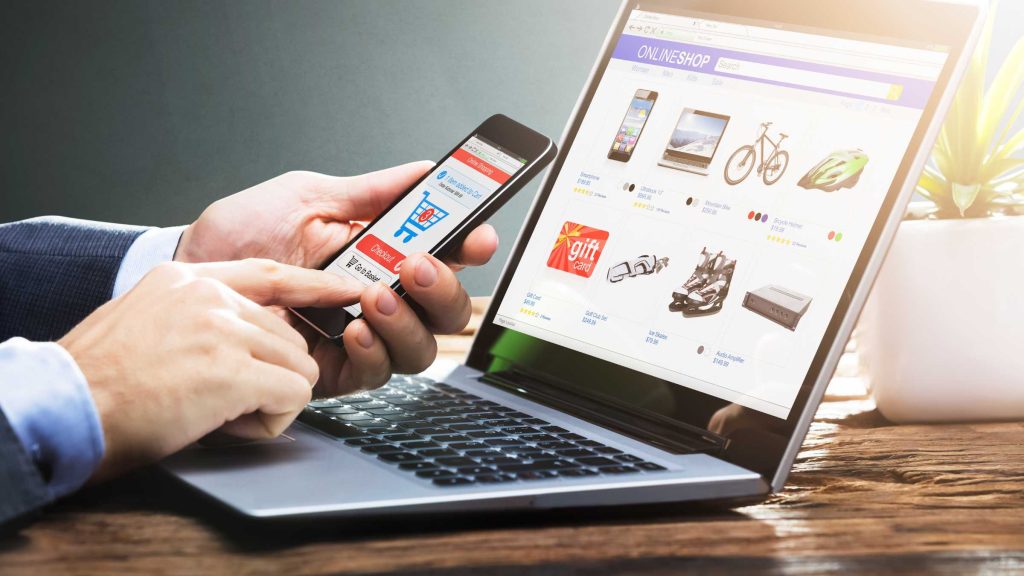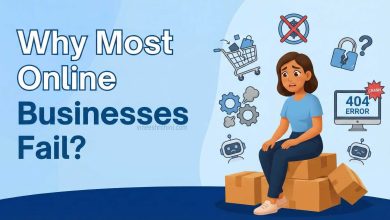How to Build an Ecommerce Website Using Shopify : Comprehensive Guide 2025
Ecommerce Website Using Shopify : In 2025, building an ecommerce website is no longer a tech-heavy or expensive endeavor. With platforms like Shopify, entrepreneurs, small businesses, and even enterprise-level brands can launch fully functional online stores with minimal technical knowledge and zero coding skills. Shopify remains the most popular ecommerce website builder globally due to its user-friendly interface, vast app ecosystem, and unmatched scalability. Whether you’re a beginner wanting to sell handmade products or a seasoned seller aiming to scale your dropshipping business, Shopify has the tools you need to succeed in the ever-evolving ecommerce landscape.
Table of Contents
This comprehensive guide will walk you through every step of creating your ecommerce website on Shopify—from planning your niche and store setup to customizing the design, adding products, integrating payment gateways, and launching a fully optimized online store that ranks and converts in 2025.
Why Choose Shopify in 2025?

Shopify stands out in 2025 for its all-in-one ecommerce solution that empowers entrepreneurs to launch, manage, and scale online businesses from a single dashboard. It offers mobile-first responsive themes, lightning-fast load times, reliable hosting, a powerful app marketplace, and seamless integrations with social media platforms, marketing tools, and third-party logistics providers. Shopify’s customer support is available 24/7, and it continuously updates its platform to adapt to the latest ecommerce trends such as AI integration, one-click checkout, and global selling features.
Read more: How to Become a Snapdeal Seller in 2025
Unlike open-source platforms, Shopify manages backend security, server uptime, and software updates, allowing you to focus solely on growing your business. For anyone searching for how to start an ecommerce business in 2025 with low risk and high potential, Shopify is the answer.
Step 1: Define Your Niche and Target Audience
Before you jump into building your ecommerce website, you must define your niche. A clearly defined niche helps you craft targeted marketing messages, build brand loyalty, and stand out in a crowded online marketplace. Whether you’re selling eco-friendly home decor, fitness supplements, pet accessories, or digital products, ensure there is a demand and that the market isn’t oversaturated.
Conduct keyword research using tools like Google Trends, SEMrush, or Ahrefs to identify high-search-volume keywords with medium competition. Use those keywords for your product descriptions, blog posts, and overall SEO strategy. Also, identify your target audience—who are they, what are their needs, where do they shop online, and what motivates their purchases? The clearer your niche and audience, the more successful your Shopify store will be.
Step 2: Create Your Shopify Account

Visit www . shopify . com and start your free trial. In 2025, Shopify typically offers a 3-day free trial and discounted plans for beginners. Choose a store name that reflects your brand and niche. Shopify will create a default domain like yourstorename.myshopify.com, but you can later connect a custom domain for branding purposes. After signing up, you’ll be redirected to the Shopify dashboard where you can begin configuring your store settings, adding products, and customizing your ecommerce website.
Step 3: Choose a High-Converting Theme
Shopify offers both free and premium themes designed for conversion, speed, and mobile responsiveness. In 2025, Shopify themes support Online Store 2.0, which gives you more flexibility with customizable sections, drag-and-drop elements, and native performance optimization.
Go to the Shopify Theme Store and select a theme that matches your niche—for example, “Dawn” for minimal design, “Sense” for health and beauty stores, or premium options like “Impulse” for high-volume sales. Preview multiple themes to ensure they align with your brand’s look and feel. Once you select a theme, install it, and start customizing the homepage, product pages, navigation menus, and footers using Shopify’s intuitive editor.
Step 4: Add Products with Optimized Listings
From your Shopify dashboard, click on “Products” > “Add Product.” Enter a clear product title that includes relevant keywords (e.g., “Organic Turmeric Face Mask – 100g”). Write a compelling product description that highlights the benefits, ingredients or materials, usage instructions, and unique selling points. Use bullet points to improve readability. Upload high-quality images with white backgrounds and lifestyle photos to boost conversions.
Set product pricing, cost per item (for profit tracking), and inventory levels. If your store uses variants like size or color, configure those accordingly. Enable “Track Quantity” to manage stock and avoid overselling. Optimize each listing for SEO by editing the page title, meta description, and URL slug using relevant keywords.
Step 5: Set Up Payment Gateways
Shopify supports a wide range of payment gateways, including Shopify Payments (available in many countries), PayPal, Stripe, Razorpay, Payoneer, and other regional options. In 2025, Shopify Payments offers integrated fraud protection, accelerated checkout options like Apple Pay, Google Pay, and Shop Pay, and lower transaction fees compared to third-party processors. To set it up, go to “Settings” > “Payments” and connect your preferred payment providers. Ensure your payment settings include major debit/credit cards and local wallets to maximize conversions globally. Also, set your store currency and tax settings based on your target market.
Step 6: Configure Shipping and Delivery Options
Under “Settings” > “Shipping and Delivery,” configure your shipping rates based on zones, product weight, or price-based tiers. Offer free shipping to boost conversions if possible, or flat rates for simplicity. Shopify also allows integration with third-party logistics (3PL) services like Shiprocket, ShipStation, and Delhivery in India or USPS, DHL, and FedEx globally. In 2025, smart shipping features automatically suggest optimized rates based on customer location and preferred courier. You can also set up local delivery or in-store pickup if you’re running a hybrid ecommerce model.
Step 7: Set Up a Custom Domain
A custom domain boosts your ecommerce website’s credibility and branding. Purchase a domain directly through Shopify (recommended for beginners) or connect one from providers like GoDaddy or Namecheap. Go to “Settings” > “Domains” and follow the instructions to connect or buy a domain. Choose a domain that is easy to remember, reflects your brand, and includes your primary keyword if possible. Once connected, set it as your primary domain and enable SSL to ensure secure browsing for your customers.
Step 8: Configure Legal Pages and Policies
Trust is critical in ecommerce. Create essential legal pages including Privacy Policy, Refund Policy, Terms of Service, and Shipping Policy. Shopify provides templates under “Settings” > “Policies.” Customize them to reflect your business operations and ensure compliance with data protection laws like GDPR or CCPA. Add links to these pages in your footer navigation so visitors can easily access them. For additional trust, display secure payment icons, money-back guarantees, and customer support information prominently on your site.
Step 9: Install Essential Shopify Apps
Shopify’s App Store in 2025 offers thousands of plugins to enhance your store’s functionality. Start with essential apps such as Oberlo or DSers for dropshipping, Judge.me for customer reviews, Klaviyo or Mailchimp for email marketing, Plug in SEO for on-page optimization, and ReConvert for post-purchase upsells. For analytics and heatmaps, install Lucky Orange or Microsoft Clarity. Always monitor app performance and uninstall unused apps to maintain site speed. Many apps offer free plans or trial periods, so you can test them before committing.
Step 10: Optimize for SEO and Speed

Ecommerce SEO is crucial for organic traffic. Optimize every page’s title, meta description, and URL using long-tail keywords relevant to your niche. Use tools like Ubersuggest or Ahrefs to discover what your customers are searching for. Add alt text to all images, ensure fast-loading pages by compressing images with apps like TinyIMG, and use a clean, responsive theme. Create an optimized blog on your Shopify site where you publish SEO-rich articles targeting informational keywords. In 2025, voice search optimization is also growing—use natural language and FAQs to improve discoverability.
Step 11: Set Up Analytics and Conversion Tracking
To grow your ecommerce website in 2025, data is everything. Set up Google Analytics 4 and Google Search Console for traffic insights and index monitoring. Integrate Facebook Pixel, TikTok Pixel, or Pinterest Tag based on your marketing platforms. Shopify also offers its built-in analytics dashboard with metrics on traffic sources, sales, customer behavior, and conversions. Use heatmaps and A/B testing tools to optimize conversion rates and user experience continually.
Step 12: Launch and Promote Your Store
Before going live, test your store thoroughly. Place test orders, check email notifications, ensure mobile responsiveness, and verify that all links and forms work properly. When ready, remove password protection from your store settings. Promote your Shopify ecommerce store through a strategic digital marketing plan. In 2025, the top traffic sources include TikTok influencer marketing, Instagram Reels, YouTube shorts, SEO blogging, Google Ads, Facebook Ads, and email automation. Offer first-time discounts, use scarcity tactics like countdown timers, and launch with urgency-driven messaging. Consider joining Shopify marketplaces and syncing products with Amazon, Walmart, Etsy, and other channels to expand your reach.
Step 13: Grow Your Brand with Email and SMS Marketing

Use platforms like Klaviyo or Omnisend to capture leads and automate your email campaigns. Set up welcome series, abandoned cart reminders, product recommendations, and win-back emails to nurture customer relationships. SMS marketing in 2025 is more powerful than ever with 98% open rates—send personalized text offers using tools like Postscript or SMSBump. Segment your audience and A/B test your messages for maximum engagement and conversions.
Step 14: Use AI Tools to Streamline Operations
AI-powered tools are reshaping ecommerce in 2025. Use chatbots like Tidio or Shopify Inbox for 24/7 customer support. Integrate product recommendation engines that use browsing behavior to increase AOV. Use AI content writers to generate product descriptions, blog posts, and ads. AI pricing tools can help you stay competitive automatically. Shopify now integrates AI-enhanced features directly into its admin, making product tagging, SEO suggestions, and data insights faster and more accurate.
Step 15: Scale with Paid Ads and Influencer Collaborations
Once you validate your product-market fit, invest in paid ads across Meta, Google, TikTok, and YouTube. Run retargeting campaigns and dynamic product ads to convert visitors. Collaborate with influencers in your niche through platforms like Collabstr or Upfluence. Use affiliate marketing tools like GoAffPro to build your brand through content creators and bloggers. The more you scale, the more you’ll need to refine your operations, improve customer retention, and manage logistics efficiently.
Ecommerce Website Using Shopify – Conclusion :

Building an ecommerce website with Shopify in 2025 is the smartest and most scalable way to start your online business. Whether you’re a beginner or a growing brand, Shopify provides everything you need—from store design and product management to payments, marketing, and analytics.
Buy Now : 100+ Shopify Premium Themes
The platform’s flexibility, security, and integrations make it ideal for long-term ecommerce success. Focus on delivering value, optimizing user experience, and leveraging digital marketing trends. As the ecommerce boom continues in 2025 and beyond, a well-built Shopify store gives you a solid foundation to grow your revenue, expand globally, and build a loyal customer base.
Disclaimer : This content is intended for informational and educational purposes only. Ecommerce involves financial risk, and results may vary depending on market trends, marketing strategy, product selection, and competition. Do your own research or consult professionals before investing money into online business platforms.
Keywords : Ecommerce Website Using Shopify – Ecommerce Website Using Shopify 2025 – Ecommerce Website Using Shopify guide



